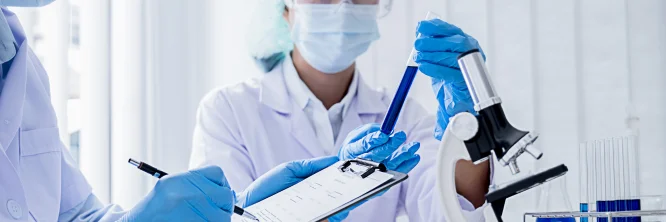Índice
Design of experiments (DoE) is a fundamental tool in the optimization and improvement of processes in various fields. Through the application of statistical techniques, the DoE allows multiple variables to be analyzed to understand their influence on results and thus improve the quality, precision and efficiency of products and processes. This methodology not only facilitates rigorous evaluation of experiments, but also supports informed decision making.
Next, the key components of DoE, their practical applications in different industries, and the steps required to develop an effective experimental design will be explored.

Design of experiments (DoE) is a methodology that applies statistics to analyze and optimize processes associated with the creation of objects, designs or projects from which a certain degree of quality, precision and efficiency is expected. For this, variables of various types are used and their responses are considered to know, in detail, the most influential factors in the results.
In this sense, the DoE allows experiments to be evaluated based on accurate data, which contributes not only to studying a large number of processes in detail, but also to making informed decisions regarding the design of both products and processes. The analyzes are, consequently, rigorous, since answers are required about what is being investigated.
So, the objectives of the DoE are summarized as follows:
Given this, experimental design is applied in a multitude of fields where a high level of precision is required. Among them, the pharmaceutical industry, industrial design, consumer goods industry, among others, stand out.
These components are:
The input variables or parameters are the conditions that make up the experiment. Therefore, they are manipulated to obtain certain results. These variables are classified into two types. On the one hand, controllable variables are those that can be changed. On the other hand, uncontrollable variables are those that cannot be modified. The analysis of these variables allows us to understand in depth the level of impact they have on the final result.
These levels refer to the values that are applied to the input variables during the experiment. These levels are modified or manipulated to understand the effects of the modifications, making it easier to explore ranges in which the minimum or exact specifications of the experiment could be met, such as improving a product or optimizing a process.
The responses are the results obtained after manipulating the variables, where the necessary adjustments are included. With these, the engineers and specialists in charge of the experiment evaluate the results of the study; That is, they investigate the performance of the variables. This analysis is based on the objectivity of the data collected; In addition, these are statistically processed to achieve reliable measurements.
Among the most common uses are:
One of the main applications of DoE is the evaluation of multiple alternatives with respect to a design or process. In other words, this type of methodology is very useful to understand how the combination of certain variables results in a certain result, especially in the development of processes or products, or in the optimization of operating conditions.
As seen, the answer is the expected result. In this sense, the design of experiments contributes to improving this response. But what is the use of this? These testing and evaluation procedures serve to identify the factors that allow the best response, that is, greater performance.
A fundamental aspect of DoE is the minimization of impacts on quality. How is this achieved? Once analyzed, the data obtained from the experiments allow us to know the points at which the factors must be modified or adjusted. Quality is understood as the absence of waste and the improvement of the response.
But process optimization cannot fail to be mentioned as part of DoE. Thanks to its procedure, productive efficiency can be increased, costs reduced and, consequently, productivity increased. The variables applied facilitate the recognition of aspects that negatively impact total performance. This recognition allows the application of corrective measures.
The design of experiments (DoE), likewise, is essential for quality control. At this point, it is ensured that the processes remain strictly in line with the established parameters or conditions so that the specifications are met. The industrial engineers and other professionals involved are attentive to variations to apply changes when necessary.
These steps are:
It begins with the description of the experimental problem and the objectives, both general and specific. Thus, the input variables are estimated, as well as the hypothesis that guides the experiment. This first step is essential for correct planning of the procedure.
Next, it is essential to establish the input variables and their adjustment levels. It is necessary to establish the conditions on which the experiment will be applied.
The design consists of specifying the work methodology. Starting from this, practical execution requires consideration of materials, resources, activities and analysis work.
At this point, the experiment is deployed as established. Likewise, data about the process is collected, so that there is a rigorous record of the tests carried out according to the input variables.
The adjustment is performed each time to correct possible ambiguities or inconsistencies during the experiment. For its part, when adjustments are made, it is common to repeat the experiment tests to obtain new results as expected.
This is the end point of the design of experiments (DoE). With the appropriate statistical analysis, you can know which of the variables, or set of them, optimizes the process or improves the response. This helps improve future designs, processes or techniques.
Now, how to select the most appropriate design of experiments (DoE)? The following aspects must be taken into account:
Also you can read about the following topics:

¡Muchas gracias!
Hemos recibido correctamente tus datos. En breve nos pondremos en contacto contigo.